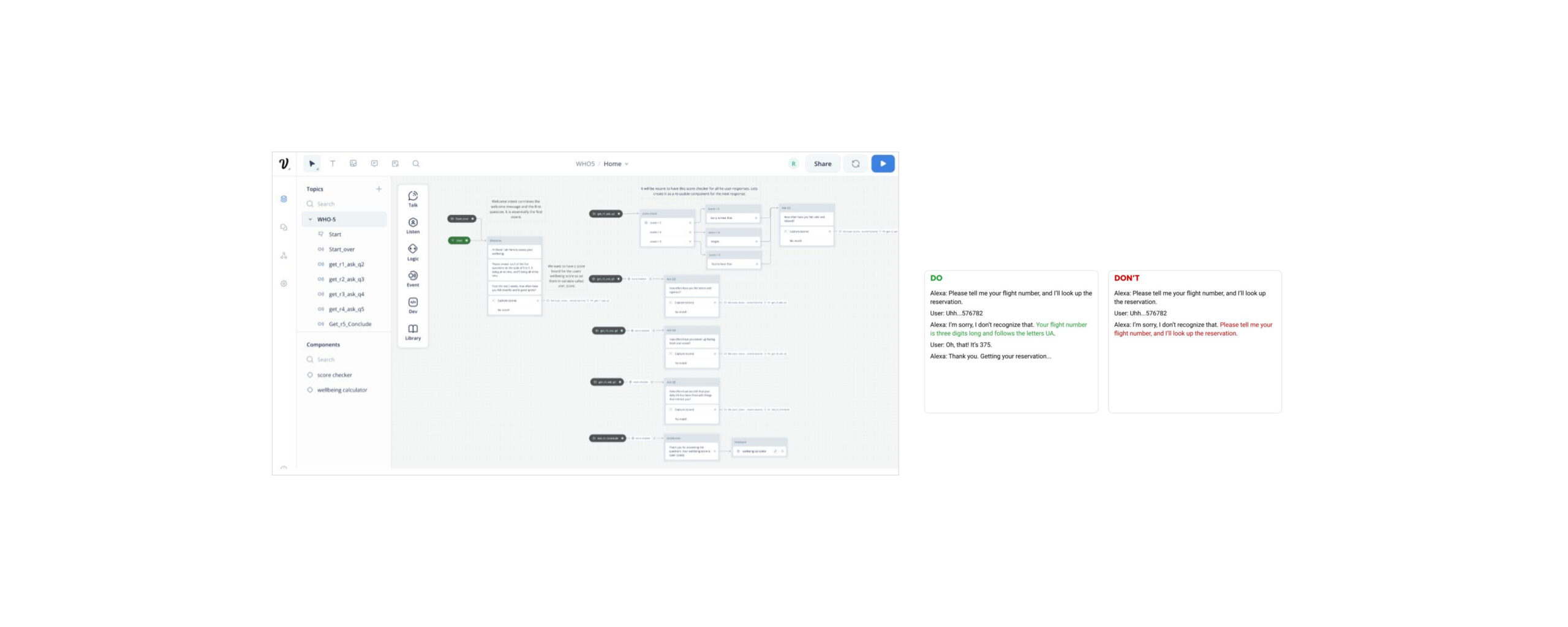
Designing Conversational Agents for Voice User Interfaces | Penn State | Fall 2022
In this introductory module, students learn the fundamentals of designing a conversational agent for voice user interfaces, focusing on how conversational agents work, the conversational design process and guidelines, hands-on prototyping exercises using Voiceflow, and evaluating the agent.
Outline
Class 1
- Introduction to conversational agents
- Conversational Design Process and guidelines
- Prototype a conversational agent
- Evaluating a speech interface design
Class 2
- Design, prototype, and evaluate a conversational agent to support cognitive restructuring
Material
- Slides
- https://developers.google.com/assistant/conversation-design/welcome
- https://developer.amazon.com/en-US/docs/alexa/alexa-design/get-started.html
- Designing Voice User Interfaces. Cathy Pearl
- Conversational UX Design. Robert J. Moore, Raphael Arar
- https://creator.voiceflow.com/
- https://voiceflow.zendesk.com/hc/en-us/categories/6139046951181-Designing
Assignment
Following the design process discussed in the class, prototype a conversational agent for cognitive restructuring CBT (example below) and evaluate it using SASSI scale.
| Agent | How are you feeling right now. |
| User | … |
| Agent | Tell me about the situation that made you feel so. |
| User | … |
| Agent | What goes through your mind when you think of that situation? |
| User | … |
| Agent | Is there an evidence that supports this thought? |
| User | … |
| Agent | Is there an evidence that doesn’t supports this thought? |
| User | … |
| Agent | Considering the evidence you provided for and against the thought you have, can you come up with an alternative thought that is more positive and share that with me? |
| User | … |
| Agent | With the alternative thought, how do you feel now? |
| User | … |
Tasks
- Come up with at least 3 alternatives for each user utterance and agent’s prompts
- Develop a conversation flow diagram with situations where users are likely to say something off-script and come up with ways to redirect the conversation to the original script
- Create a prototype using voiceflow
- Let another group members evaluate the agent using the SASSI scale